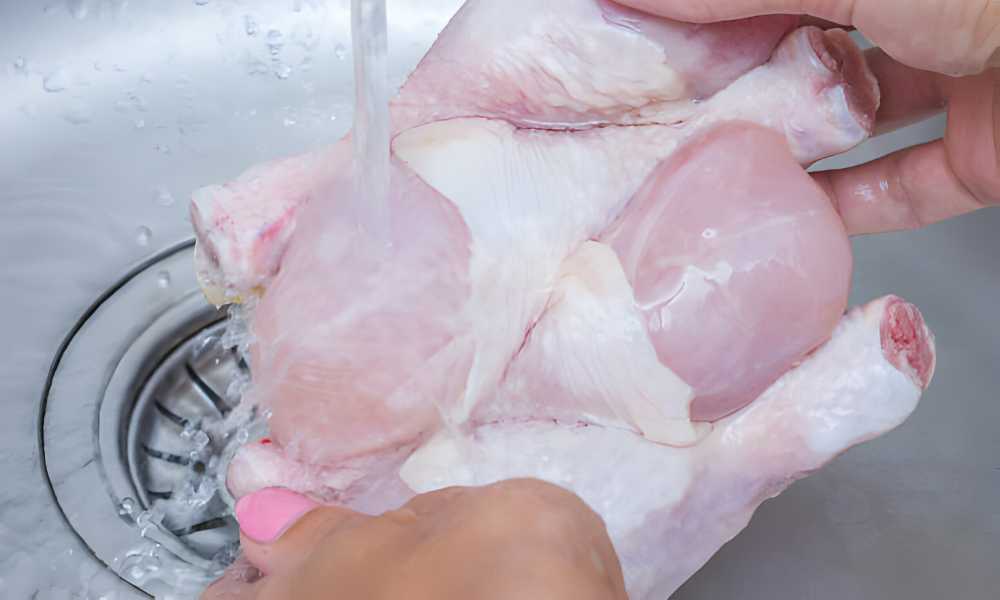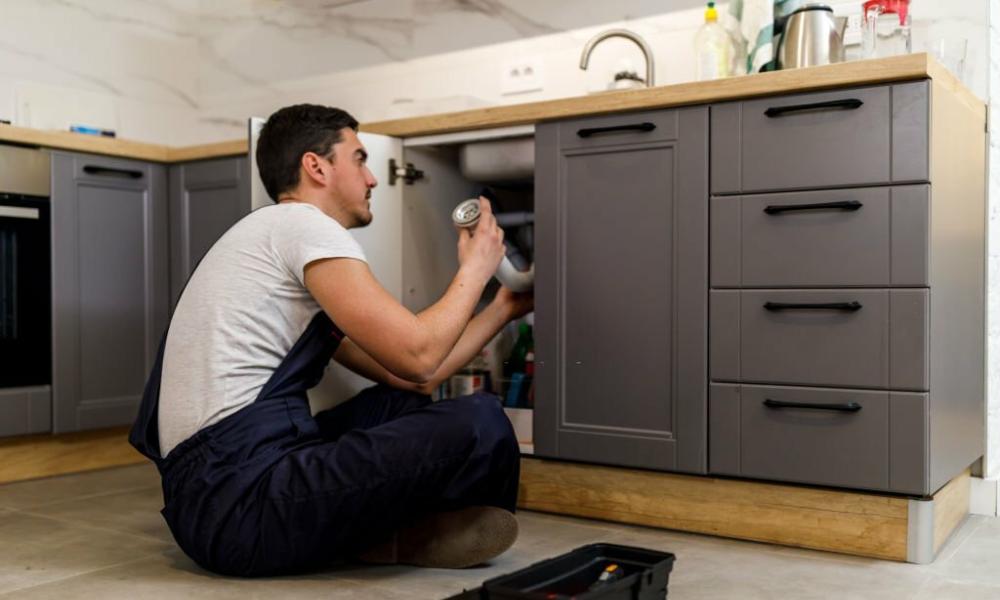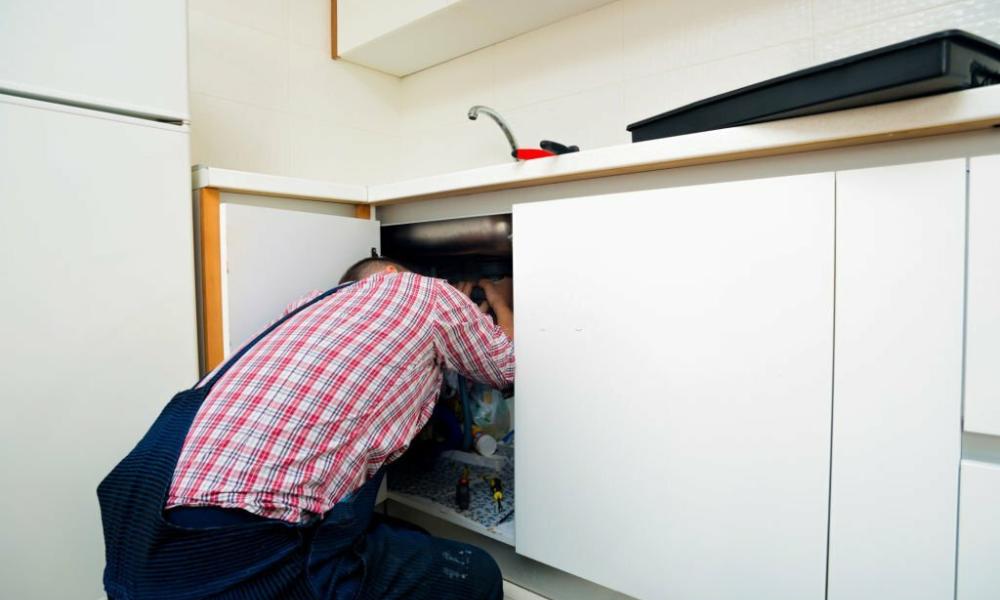To clean a sink after raw chicken, use hot, soapy water and disinfect with a bleach solution. It’s important to thoroughly clean and disinfect the sink after handling chicken to prevent cross-contamination and foodborne illnesses.
Cleaning the sink after handling chicken is crucial for maintaining food safety and preventing the spread of bacteria. It can harbor harmful pathogens that may contaminate the surface, posing a risk of cross-contamination with other foods and utensils.
By following proper cleaning protocols, you can effectively eliminate any potential hazards, ensuring a clean and safe kitchen environment. We will provide simple yet effective steps to clean the sink after raw chicken, helping you maintain a hygienic kitchen space and protect your family from foodborne illnesses.
Preparation Before Cleaning
Before beginning the process of cleaning the sink after handling raw chicken, it’s crucial to take certain preparatory steps to ensure the safety of your kitchen environment. This includes clearing the sink of any items, as well as gathering the necessary cleaning supplies. By following these steps, you can effectively minimize the risk of cross-contamination and maintain a hygienic kitchen.
Clearing The Sink
Start by removing any dishes, utensils, or other items from the sink. Ensure that the sink is empty to allow for thorough cleaning. This step is essential to prevent the spread of bacteria from contaminated surfaces to your clean dishes or utensils. Carefully place all items in a designated area, separate from the cleaning process.
Gathering Necessary Cleaning Supplies
Before you begin cleaning, ensure you have all the necessary cleaning supplies readily available. Gather the following items:
- Hot water
- Dish soap
- Bleach or white vinegar
- Cleaning gloves
- Cleaning sponge or brush
- Paper towels or cleaning cloth
Having these supplies on hand will streamline the cleaning process and enable you to effectively sanitize the sink after handling raw chicken.
Cleaning The Sink
When it comes to raw chicken, it’s essential to take extra care when cleaning your sink to prevent cross-contamination and ensure the safety of your kitchen. Cleaning the sink properly after handling chicken is crucial. Here’s how to do it:
Rinsing With Hot Water And Soap
Rinsing the sink with hot water and soap is the first step to remove any visible residue and grease left behind from the raw chicken. Make sure to use hot water and mild dish soap to thoroughly clean the entire surface of the sink. Scrub the sink with a sponge or scrub brush to ensure all areas are covered. After the scrubbing, rinse the sink with hot water to remove any soap residue.
Disinfecting With A Bleach Solution
Disinfecting the sink with a bleach solution is an important step to kill any remaining bacteria. Create a bleach solution by mixing 1 tablespoon of bleach with 1 gallon of water. Carefully pour the solution over the entire surface of the sink and let it sit for at least 5 minutes. Afterward, thoroughly rinse the sink with warm water to remove any residual bleach.
Scrubbing And Rinsing The Drain
Don’t forget to give some attention to the sink drain. Use a sink brush or an old toothbrush to scrub around the drain area, removing any potential bacteria or food particles. Rinse the drain thoroughly with hot water to ensure it is clean and free from any leftover debris.
Preventative Measures
When dealing with raw chicken in the kitchen, taking preventative measures to avoid cross-contamination is crucial. By following some simple steps and practices, you can significantly reduce the risk of harmful bacteria spreading in your kitchen.
Using Separate Cutting Boards
To prevent cross-contamination, use separate cutting boards for chicken and other foods. Designate one cutting board specifically for raw meat, poultry, and seafood, and another for fruits, vegetables, and cooked foods. This separation significantly lowers the risk of bacteria transferring from to other foods, thus maintaining kitchen hygiene.
Properly Storing Raw Chicken
Properly storing raw chicken is essential. Keep it in its original packaging, and if the packaging is compromised, transfer the chicken to an airtight container to prevent any potential leakage. Store on the bottom shelf of the refrigerator to prevent any drippings from contaminating other items. It’s also important to check the expiration date and use the chicken within the recommended time to ensure its freshness and minimize the risk of bacteria growth.
Addressing Bacteria
Understanding The Risks
Raw chicken can carry harmful bacteria such as Salmonella and Campylobacter. When the chicken comes into contact with the sink, these bacteria can spread and contaminate the sink and any items that come into contact with the sink afterward. Understanding the risks associated with this contamination is crucial in preventing foodborne illnesses and maintaining a safe kitchen environment.
Following Food Safety Guidelines
Following proper food safety guidelines is essential to prevent the spread of bacteria when cleaning a sink after raw chicken. By following these guidelines, you can ensure that your sink is thoroughly cleaned and sanitized, reducing the risk of cross-contamination and keeping your kitchen safe for food preparation.
Kitchen Hygiene Practices
Kitchen hygiene practices are essential for maintaining a clean and safe cooking environment. When dealing with raw chicken, it’s crucial to adhere to stringent hygiene standards to prevent cross-contamination and bacterial spread. Properly cleaning the sink after handling is a key component of kitchen hygiene. Let’s explore some effective practices for maintaining a hygienic kitchen environment.
Regular Cleaning Schedule
Establishing a regular cleaning schedule for your kitchen sink is paramount, especially after handling raw chicken. Use a mild detergent and hot water to thoroughly clean the sink after each use. Pay special attention to the faucet and handles, as these areas often accumulate bacteria. Additionally, consider using a disinfectant specifically formulated for kitchen surfaces to ensure thorough sanitation.
Importance Of Handwashing
Handwashing is a fundamental aspect of kitchen hygiene, particularly after handling raw chicken. Always wash your hands with soap and warm water for at least 20 seconds after coming into contact with the chicken or the sink used for its preparation. This simple yet crucial practice helps minimize the risk of spreading harmful bacteria throughout the kitchen.
Conclusion
Keeping your sink clean after handling raw chicken is crucial to prevent cross-contamination and ensure food safety. By following the proper cleaning methods and using effective disinfectants, you can minimize the risk of bacteria spreading in your kitchen. Make it a habit to sanitize and maintain your sink regularly to create a healthy cooking environment.




